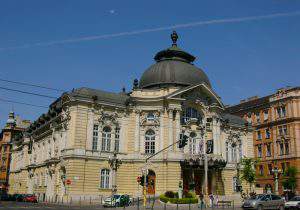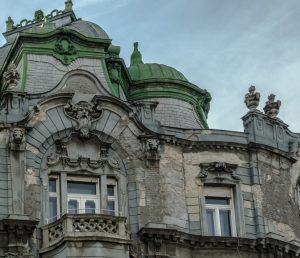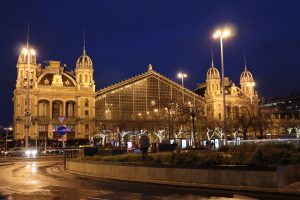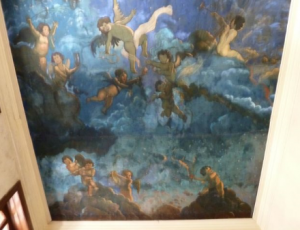Budapest Grand Boulevard: Most beautiful 100-year-old buildings!

The Great Boulevard is one of the most important routes in downtown Budapest, passing through the inner districts, the Northern border of Újlipótváros and the Northern border of Lipótváros, Terézváros, Erzsébetváros, Józsefváros and Ferencváros. Today, tram lines 4 and 6 run in the middle road, which is Europe’s busiest tram line with 200,000 passengers a day.
The boulevard is 4.1 kilometres long, and its average width is 45 metres. The first stages of construction were in 1872-1883, and the finishing leg was in 1897–1906. In between the two construction periods, hundreds of houses were built and opened for the public. Join us an see the best and most interesting ones.
Houses
Szent István körút 14. – Víg theatre

(Hungarian: Vígszínház)
Vígszínház is one of the most popular and most spectacular theatres in Budapest. The Vígszínház building was built in 1896, in just one year, according to the plans of the Vienna Fellner and Helmer offices. Behind the building, there was a swampy area at the time. A dazzling turn-of-the-century Budapest and new centres of citizenship, Lipótváros and Újlipótváros, were built around the corner. The building is characteristic of late historicism. The architect couple Fellner and Helmer also introduced a structural solution inside the theatre building that distinguishes their buildings from previous theatres and was suitable for meeting the social representational needs of the late 19th century.
Architect: Ferdinand Feller and Hermann Helmer
Year of construction: 1896

Szent István körüt 17
Several noble contractors participated in the construction of the former Lipot Boulevard 17 building.
The house was completely ahead of its time, equipped with a person and a lorry, gas and electric lighting, gas stoves, as well as handy and comfortable equipment. The maid’s quarter and the laundry room were located on the fourth floor or above because climbing the stairs was the ‘privilege’ of the maids. The average size of the apartments ranged from 100 to 150 square metres. Civic flats could be up to 250 square metres. Often, several generations lived in one house.
The apartments on the first floor were considered the best and most valuable ones. Often, the balcony belonged to these apartments alone. Most of the houses had a porter’s apartment, who watched any inbound people. In some houses, already after 10 o’clock, the house had to be silent. Lifts often operated with keys and only carried passengers up. There were also elevators that worked with change or coins.
Architect: Gyula Orchy
Year of construction: 1901
Teréz körút 55-57 – Nyugati railway station
Nyugati Train Station is one of Budapest’s oldest railway stations. The first railway station in the vicinity of the present building was called Pest House Indo.

Over the course of time, the initial station was increasingly unable to serve the ever-increasing commodity and passenger traffic of the growing railway network.
The design of the new railway station was made by the architect August W. De Serres of Austria and the company of Gustave Eiffel, who became world-renowned for the Eiffel Tower. The hall of the railway station is a combination of curved iron beams and glass. For nearly ten years, the architect worked on creating the Eiffel Tower in Paris.
Architect: A.W. de Serres and Gustave Eiffel
Year of construction: 1875-77
Erzsébet krt 24.

In the yard of the house, these special ‘glass mushrooms’ can be found. Sebestyén Hirsch has several major Grand Boulevard construction projects. The phone set up by
Tivadar Puskás was in the building for a frightening short nerve. The purpose of the phone newsletter was to be the fastest news service imaginable. Its inventor, Tivadar Puskás, wanted the news to be read into a single microphone and to be heard at several different points in the city at the same time. The news series provided by a dedicated editorial service was read in a telegram style and repeated for an hour. In addition to political, local, public and stock market news, accurate Central European time was also periodically announced.
Among the inhabitants of the house was Ödön Vojter, the chief engineer who participated in the construction of the underground railway in Budapest.
Architect: Meixner Károly
Year of construction: 1886-1887

Teréz körút 28
This house does not show the treasure in it from the outside. In the staircase, there is a fresco depicting beautiful angels on the ceiling, which is only seen by those who look up.

The house was built by Antal Lővei, a beekeeper.
On the ground floor was the Ullmann Nurses’ Fashion Room. According to the then-famous Sunday newspaper, French dresses and English costumes were tailor-made.
Architect: Oaugenfeld Lajos
Year of construction: 1898
Source:





